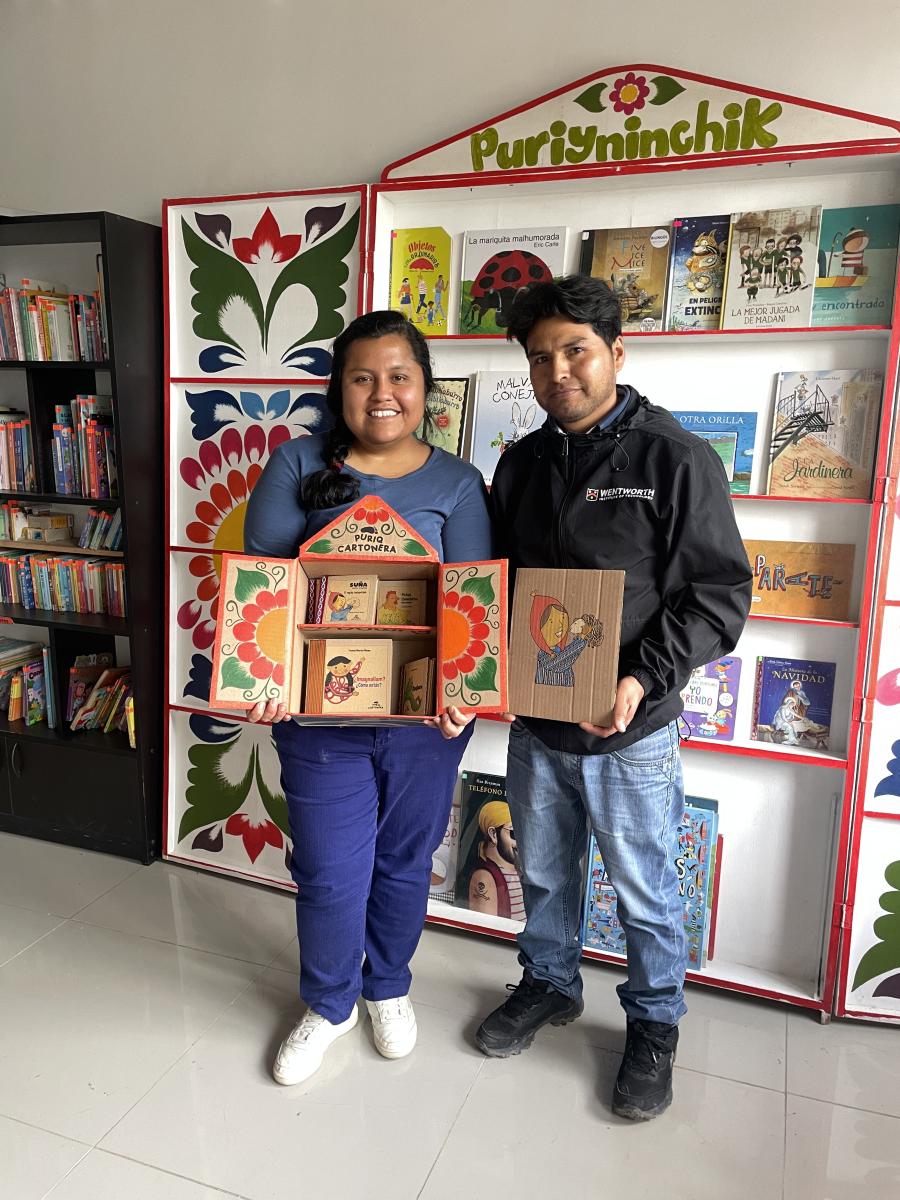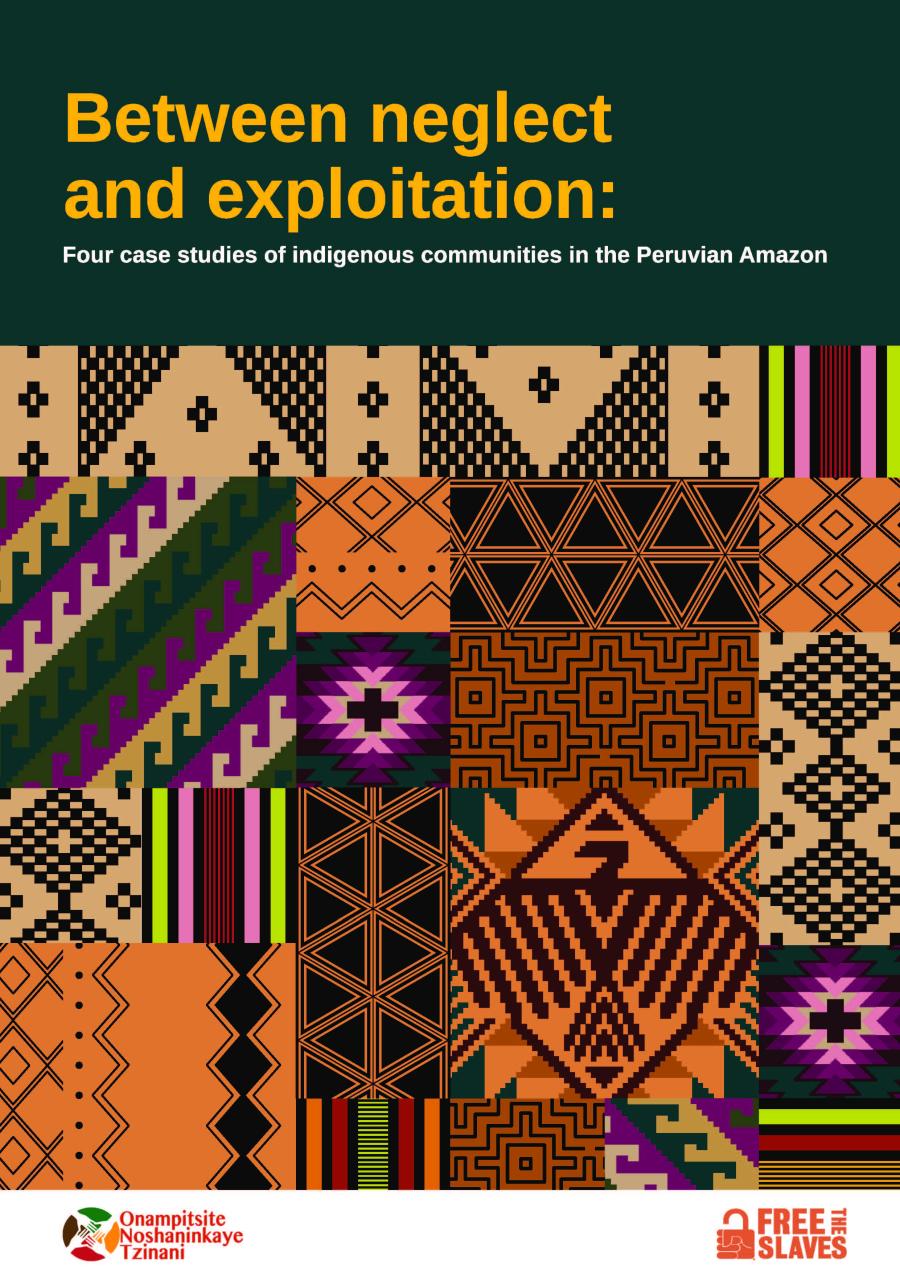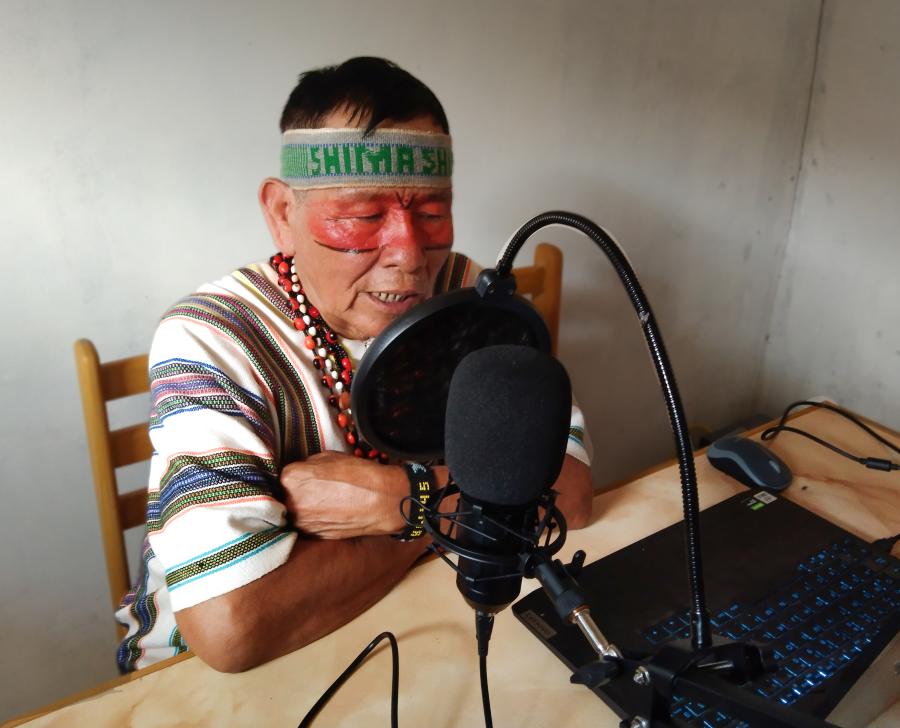Big-Leaf mahogany is one of the most valuable types of wood in the international market and highly prized by furniture makers. As a result, it has been logged from most of its original range. The one area that still contains significant numbers of mahogany trees is the Madre de Dios region of the Peruvian Amazon, and loggers are flocking there despite the trees being protected. Unfortunately, this region is also home to several voluntarily isolated indigenous peoples—groups at severe risk because of the illegal logging. To make matters worse, the logging is being carried out by other indigenous groups.
Nestled on the southeastern border of Peru, the department of Madre de Dios (Mother of God) is an area of dense and remote rainforest that extends over the provinces of Tahuamanu, Manu, and Tambopata, covering an area of 33,000 square miles—about the size of Indiana. Madre de Dios has world records for bird, insect, and mammal biodiversity, and is the habitat of 13 species of endangered animals, including the jaguar, the harpy eagle, the black caiman, and the white-winged guan. Although Madre de Dios is internationally renowned for being an environmental gem, the indigenous peoples who live within it are not commonly known to the outside world—which is exactly the way they want it. Several of these are voluntarily isolated peoples whose contacts with Western culture have been disastrous and who have chosen to stay hidden in the forest, avoiding general Peruvian society. But their isolation is coming to an abrupt and destructive end. They are being pushed into more and more marginal areas where they face sickness, starvation, and cultural dissolution, and all because of your coffee table.
Madre de Dios is home to 11 indigenous peoples, 9 of which are aboriginal and 2 of which—the Kichwa/Inka and the Shipibo-conibo—hail from other regions of the Amazon. The original peoples of Madre de Dios include the Matsigenka, Ese Eja, Harkmbut, Yine, Amahuaca, Yaminahua/Yora peoples and the voluntarily isolated Mashco Piro, as well as two other unidentified voluntarily isolated peoples.
Madre de Dios is also home to some of the last substantial populations of big-leaf mahogany, one of the most valuable timbers in the international market, and highly prized for furniture. Eighty percent of Peru’s mahogany goes to the United States, where manufacturers like Henredon, Thomasville, Henkel-Harris, Hekman, and Pottery Barn turn it into chairs, tables, and chests. The Convention on International Trade in Endangered Species (CITES) prohibits trade in mahogany that isn’t certified as sustainably harvested, as does U.S. and Peruvian law. But the market price for Peruvian mahogany is now around $1,500 per cubic meter, and with a single tree producing $1 million worth of furniture there is significant incentive for loggers to flout the law and for governments to be less than vigilant in enforcing it. Peru has an extremely loose system for certifying and inspecting logging concessions, often doing the inspecting after the site has already been logged. And in the United States the Bush administration shows the same contempt for mahogany-trading regulations that it shows for all environmental legislation. As a result, mahogany logging is advancing at a breakneck pace. Loggers have already stripped the Manu and Tambopata provinces, and the northern Tahuamanu province now is one of the few places in the Peruvian Amazon where mahogany can still be found. But the lush and dense forests of the Tahuamanu province are also home to voluntarily isolated peoples: the Mascho-Piro and two others presumably related to the Yora (also known as Nahua) of the Pano linguistic family. Today Tahuamanu is suffering the greatest invasion of illegal loggers in its history.
The total indigenous population of Madre de Dios is estimated to be only 9,000. This extremely low number is the result of the demographic collapse suffered by indigenous populations during the rubber boom of the early 1900s, which brought in its wake disease, war, and bloody forms of recruiting indigenous labor. The isolation in which these indigenous peoples live today makes it difficult to know their demographic, physical, or cultural characteristics with any accuracy, but information from nearby peoples suggests that there are between 300 and 600 Mascho-Piro and that they migrate seasonally. They are tall people with coppery skin and straight black hair down to their shoulders. Some paint their bodies with annatto, and adults wear small pieces of cloth made from tree bark, bush-papaya fiber, or Brazil-nut shells to cover their genitals. Although the identity of the other isolated peoples of the Tahuamanu province is not as clear, it is believed that they are semi-nomadic. The few descriptions available say that the men have a crown-like circular haircut and wear only a belt made from envira bark, while the women use a small piece of envira as a loincloth.
The isolated indigenous peoples of Madre de Dios were not originally nomadic; they lived in more permanent settlements in rich alluvial areas. But the rubber industry brought territorial invasions, abduction of their women, slavery, and diseases, all of which caused the people to abandon their original lands and move into the rainforest. The rubber boom was followed by logging, mining, colonization, exotic tourism, and missionaries, which only reinforced the desire for isolation. Today, these people shift location with the seasons—a necessary strategy to survive in the surprisingly limited environment of the rainforest proper. The challenges of this lifestyle stunt both their population growth and their cultural continuity. And now they have run out of room to run.
It is common for logging companies to build illegal roads through indigenous peoples’ territory to facilitate access to mahogany. These logging roads act as a magnet for uncontrolled colonization, with evangelical missionaries, colonist families, and disease (especially the increase in the incidence of malaria) quickly following. An extensive investigation conducted in 2003 by researchers from the University of Edinburgh found that 17.3 percent of loggers in Madre de Dios had encounters with uncontacted Indians, and in one district 92 percent of the 261 logging camps were located in the lands of voluntarily isolated indigenous peoples.
The illegal logging operations do not just hurt isolated groups of indigenous peoples; they also dramatically affect more integrated indigenous peoples. A 2004 International Labor Organization report on forced labor estimates that a majority of the 33,000 people working for logging operations in the entire Peruvian Amazon are members of local indigenous groups, and that these camps entrap their workers through a debt-bondage system. In one of the most common forms of forced labor the logging patrones (bosses) make verbal or written “contracts” with the indigenous communities, where the community itself is made to log mahogany in their own land, allowing the logging company access to the most precious forested areas of their territory. The indigenous communities are approached by middlemen who offer advances of goods such as rice, sugar, or salt, or in the form of amenities, such as a school. In return, the community agrees to provide the middleman a specific quantity and quality of mahogany. The value or price of the mahogany being extracted is never mentioned in the contracts.
For the logging companies, the most profitable groups to exploit—and also the most vulnerable to exploitation—are the poorest and most remote indigenous communities, who can neither read nor understand the contacts they are signing and who are unaware of both the value of money and the market prices of the goods being advanced to them. The middleman takes full advantage of this situation by vastly over-charging for the basic goods advanced while concurrently under-valuing the mahogany being delivered by the community. When the community returns with the agreed quantity of mahogany they are told that the quality of the wood is inferior to what was agreed upon, and therefore less valuable. The indigenous community must continue to provide an increasing amount of mahogany in order to pay off their initial advance. The middleman repeatedly delays payment for the timber while under-valuing what is extracted, and in so doing increases the communities’ debt. In addition, the contracts often specify that the community is not allowed to work for other logging concerns or sell their timber elsewhere. The indigenous community thus finds itself trapped in ever-increasing debt, unable to pay off the initial advance by finding other sources of work or income. The indigenous community is ordered to either work off their advances by continuing to log in their territories or to pay in kind by sending members of their community to work in the logging camps. The debts are never fully paid, and the people are caught in a never-ending cycle of bondage.
Debt-bondage applies to the camp workers as well as to indigenous communities. For camp workers the cycle is initiated by an advance on their paycheck and the consequent consumption of food and goods bought from the camp store. They are charged three to five times the actual worth of these goods and accumulate interest on their growing debt while also covering the cost of their accommodation and their medical needs. Children and wives often accompany the workers, and the work they carry out, such as logging or cooking and cleaning within the camps, goes unrecognized and unpaid for by the patrones. Workers are generally not paid until the end of the logging season, when they are told that their debts are higher than their earnings, and they have to return next season to pay off the remaining debts.
A deeply twisted and ironic result arises from this labor system: isolated indigenous peoples and the indigenous peoples who live in near-by lands end up becoming the very hands that destroy their already-fragile territories. And those territories represent far more than mere real estate. The voluntarily isolated indigenous peoples of Madre de Dios live exclusively from the resources provided by their forests and rivers, and are therefore extremely vulnerable to changes in their environment. Logging in indigenous areas scares off game animals and contributes to a drastic fall in the level of food resources. As protein levels drop so does fertility, threatening even more their already precarious survival. A survey by the French Institute of Socio-Economic Studies found high levels of malnutrition among indigenous peoples whose lands were invaded by loggers.
The voluntarily isolated peoples of Madre de Dios have made visible signs that indicate the boundaries of their territories, expressing yet again their decision and right to be isolated. The signs range from reed posts planted in the sand or across the river to sticks with dead parrots set atop them to broken bows stuck in the sand on the banks of a river. The most frequent sign of their presence is their whistling, imitating the sounds of animals, which has an intimidating effect on those entering their territories. Indigenous peoples generally respect each other’s lands; the visible parts of their territories are the “corridors,” which are paths with branches broken at thigh height to mark a group’s area of transit. Normally, isolated groups avoid each others’ corridors and territory for fear of conflict. Because of the encroachment of loggers and the advancement of the extraction frontier, however, the territories available to the indigenous people in isolation are constantly shrinking. Isolated communities are being pushed out of their own areas and into the territory of other isolated indigenous groups. There have been numerous reports of clashes with isolated indigenous groups and sedentary neighbors, making the danger of group extinction even more real.
Isolated indigenous groups are extremely vulnerable to any outside contact, particularly if sudden and uncontrolled, which is the case with logging teams. All forms of contact that have been reported have been violent. To maintain their cultures, their homes, their ways of life, their identities, and their survival as peoples, indigenous groups have been forced to defend their land. Faced with firearms and the invasion of their territories by loggers, the isolated indigenous peoples of Madre de Dios have increasingly been resorting to violence and armed conflict, resulting in death on both sides. In these remote areas there is little or no monitoring or investigation into the number of assassinations of isolated indigenous peoples resulting from the advance of illegal mahogany logging.
The environmental impact of the logging is equally severe, having already led to a 50 percent decrease of the range of mahogany in Peru. Experts estimate that within the next decade it will shrink by an additional 28 percent. In the Amazon Basin, where it can take more than 100 years for mahogany trees to reach full reproductive maturity, uncontrolled logging leaves little chance for regeneration. And the logging roads and related activity have an extremely disruptive effect on wildlife and other plant species. To address the environmental problems, the Natural Resources Defense Council (NRDC) has teamed with two Peruvian organizations, the Native Federation of the Madre de Dios River and Tributaries, and the Racimos de Ungurahui Working Group, a Lima-based NGO that provides legal services to Amazonian indigenous peoples of Peru. Together they have brought suit against the top three importers of Peruvian mahogany into the United States: Bozovich Timber Products, TBM Hardwoods, and T. Baird McIlvain International.
Meanwhile, Cultural Survival plans to address the cultural impact of logging in the Madre de Dios region by sending this issue of Cultural Survival Quarterly to U.S. congressional representatives during debates on a proposed free-trade agreement between the United States and Peru. The hope is that if lawmakers learn of the dire consequences of illegal logging they will take advantage of the political opportunity the negotiations provide to press for increased protections for Peru’s indigenous peoples as well as for stiffer enforcement of existing prohibitions on trade in mahogany. If the demand can be cut off, perhaps the impetus for illegal logging will be removed, and the indigenous peoples of the Madre de Dios can fade back into the forest on their own terms.
Kira Intrator is an intern at Cultural Survival. For more information on the NRDC campaign, go to www.nrdc.org.



